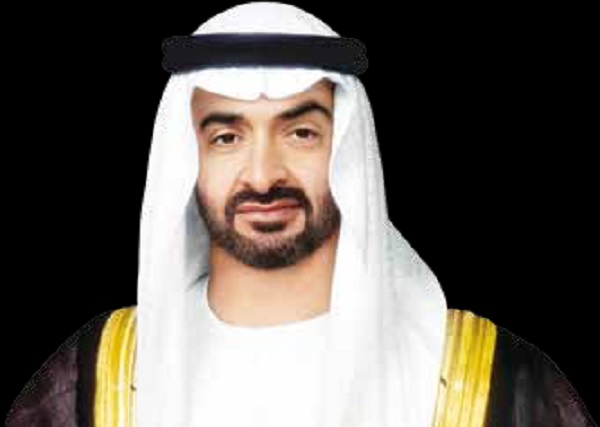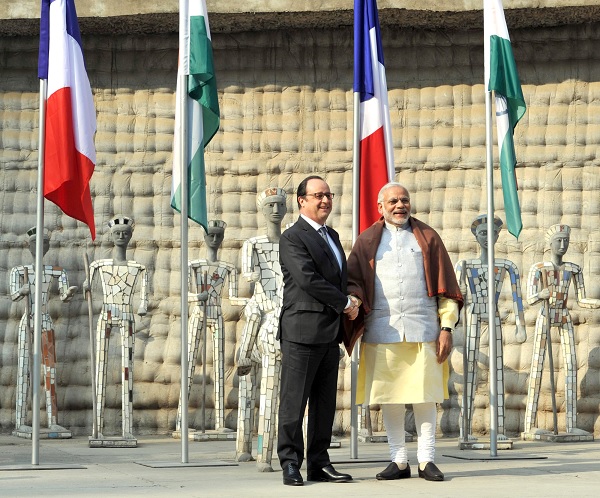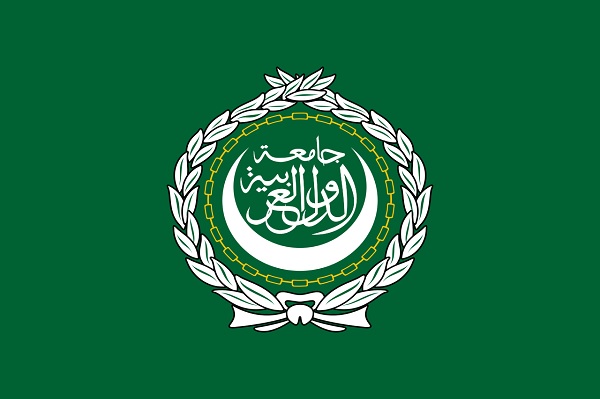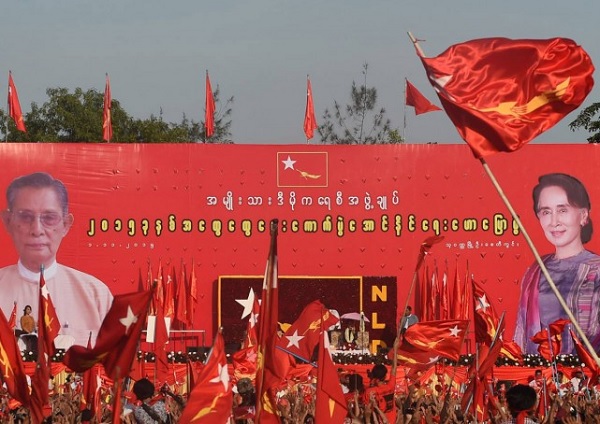
by Editor | May 25, 2021 | Muslim World

Sheikh Mohamed bin Zayed Al Nahyan,
Abu Dhabi:(IANS/WAM) The cooperation between India and the UAE in the energy sector is expected to grow following the visit to India of Sheikh Mohamed bin Zayed Al Nahyan, Crown Prince of Abu Dhabi and Deputy Supreme Commander of the UAE Armed Forces, beginning Wednesday.
The visit comes six months after Indian Prime Minister Narendra Modi came to the United Arab Emirates (UAE) to strengthen bilateral ties and increase investments between the two countries.
A number of new agreements are likely to be signed, including on oil and gas and renewable energy, as part of the Abu Dhabi crown prince’s visit, Gulf News, a UAE-based daily, said.
“India is a growing energy market particularly with the Chinese demand slowing. So far we haven’t seen very much action by the Indian energy companies in the UAE so might be interesting to see if Indian energy companies are going to play more of a role here,” the paper quoted Robin Mills, chief executive officer of Dubai-based Qamar Energy, as saying.
Mills said there is a lot of room for investment in the Indian energy sector, particularly in power generation.
“A memorandum of understanding already exists between Abu Dhabi National Oil Company, (Adnoc), and the Indian Strategic Petroleum Reserve. India is seen as an important customer for UAE oil and the cooperation could stretch to UAE investment in developing energy reserves of gas and oil in India,” Gary Dugan, chief investment officer at Emirates NBD, said.
India imports about 270,000 barrels of crude oil per day, with the UAE being the sixth-largest supplier of the commodity to India.

by Editor | May 25, 2021 | Corporate, Economy, News

Prime Minister,Narendra Modi with the President of France, Mr. Francois Hollande, at Nek Chand Rock Garden, in Chandigarh
Chandigarh:(IANS) As the fastest growing big economy in the world, India has both the skilled workforce to produce as well be the market for French products, Prime Minister Narendra Modi said on Sunday.
“India is the fastest growing economy in the world. We have the labour and the market for your products,” Modi said at the India-France chief executives meeting here along with visiting French President Francois Hollande, according to a tweet by external affairs ministry spokesman Vikas Swarup.
“I’ve had the opportunity of meeting President @fhollande five times in the last year,” Modi said according to another tweet by Swarup.
Modi earlier met Hollande at the Rock Garden here in the city created by French architect Le Corbusier, after the latter’s arrival here on a three-day official visit to India.
“Glad to welcome @fhollande in the city built by the great Le Corbusier. PM @narendramodi addresses the CEO’s Forum,” Swarup said in a separate tweet.
During Hollande’s visit, France is likely to sign a memorandum of understanding with Chandigarh to help it develop as a smart city, official sources said.
France has committed to help three Indian cities – Chandigarh, Nagpur and Puducherry – to develop as smart cities.
“Defence, green economy, smart cities, infrastructure, transportation, water and financial sector on the agenda of the Indo-French CEO’s Forum,” Swarup tweeted earlier.

by Editor | May 25, 2021 | Muslim World
 New Delhi:(IANS) India and the Arab League member states on Sunday condemned terrorism in all its forms and manifestations, including cross-border terrorism, and also called for urgent reforms in the UN Security Council.
New Delhi:(IANS) India and the Arab League member states on Sunday condemned terrorism in all its forms and manifestations, including cross-border terrorism, and also called for urgent reforms in the UN Security Council.
“The #ManamaDeclaration condemns terrorism in all its forms and rejects associating terrorism with any religion,” external affairs ministry spokesman Vikas Swarup tweeted.
The declaration was adopted after the first ever ministerial-level meeting of the India-Arab Partnership Conference in Bahrain’s capital Manama on Sunday, which was attended by External Affairs Minister Sushma Swaraj.
The Arab League comprises 22 countries in Middle East and northern Africa – Algeria, Bahrain, Comoros, Djibouti, Egypt, Iraq, Jordan, Kuwait, Lebanon, Libya, Mauritania, Morocco, Oman, the State of Palestine, Qatar, Saudi Arabia, Somalia, Sudan, Syria, Tunisia, the United Arab Emirates and Yemen.
The relationship between India and the Arab countries has been taken to the next level called India-Arab Partnership Conference, four meetings of which have already been held with New Delhi hosting the last one in 2014 and the next conference scheduled to be held in Oman in May this year.
“The two sides condemned terrorism in all its forms and manifestations and rejecting associating terrorism with any religion, culture or ethnic group, emphasised the need for concerted regional and international efforts to combat terrorism and to address its causes and to develop a strategy to eliminate the sources of terrorism and extremism including its funding, as well as combating organised cross-border crime,” the Manama Declaration reads.
“They supported the efforts of the UN Counter-Terrorism Committee (CTC) and adoption of the Comprehensive Convention on International Terrorism (CCIT), at the earliest,” it states.
The Arab side also aspired “to an effective Indian role, in cooperation with Arab states, to enhance peace and security at the regional and international level”.
The declaration assumes significance as India is concerned over the deepening sectarian divide in the region and the growing footprint of terror groups like the Islamic State.
After Saudi Arabia executed a Shia cleric on charges of terrorism earlier this month, its missions in Iran came under attack and subsequently diplomatic ties between Riyadh and Tehran were cut off.
According to the Manama Declaration, the two sides recalled the historic and civilisational ties that exist between the Arab world and India and underlined the contribution of the commercial and cultural ties in binding the two sides together.
“They hailed the strong foundation, great potential and wide-ranging prospects for the Arab-Indian co-operation and the role this forum can play to advance Arab-India relations towards capacious horizons,” it states.
“They confirmed their commitment to maintain international peace and security and to achieve sustainable development and expressed their commitment to work together to tackle political and economic challenges through closer consultation, cooperation and coordination in various fields.”
Both the sides also called for urgent reforms of the UN Security Council through expansion in both permanent and non-permanent membership to reflect contemporary reality.
“They agreed that the current structure of the UN Security Council was not representative of a majority of the people of the world but continued to perpetuate a system that was anachronistic,” the declaration states.
India and the Arab countries reaffirmed their commitment to verifiable and non-discriminatory nuclear disarmament and the complete elimination of nuclear weapons and other weapons of mas destruction (WMDs) in an irreversible manner and agreed to strengthen collaboration to achieve this important objective according to relevant UN resolutions.
On the bilateral front, both sides recognised the need to hold more people-to-people interactions between the two sides, particularly exchanging youth delegations to share experiences and ideas about each other’s culture and traditions.
“It was also agreed to promote exchange of women’s delegations with a view to promote women empowerment,” the declaration states.
India and the Arab regional grouping also hoped to strengthen future cooperation in economic, trade and investment, within the framework of the existing mechanisms and further developing these mechanisms.
“In view of the great importance the two sides attach to enhance bilateral cooperation in the field of energy, they expressed hope to reach a memorandum of understanding in the field of energy in order to enhance cooperation in this field, especially in the field of renewable Energy,” it states.
“Both the sides desire to strengthen cooperation in the fields of science and technology, information and communication technology (ICT), environment, agriculture and food security, tourism, health and establishing the necessary mechanisms to enforce cooperation in these fields to achieve common interest of India and Arab countries,” the declaration reads.
On regional issues, the two sides expressed deep concern over the situation in Syria and called on Israel to end its occupation of the Palestinian “Arab” territories it seized in 1967.

by Editor | May 25, 2021 | Muslim World
 Nairobi:(IANS) Even as rich nations conceded to the demands of emerging economies on issues such as finding a permanent solution to disputes over government stockpiling of food for security, India protested the non-inclusion of development agenda at the latest global trade talks that concluded here on Saturday.
Nairobi:(IANS) Even as rich nations conceded to the demands of emerging economies on issues such as finding a permanent solution to disputes over government stockpiling of food for security, India protested the non-inclusion of development agenda at the latest global trade talks that concluded here on Saturday.
After a day’s extension, the scheduled four-day Ministerial Conference of the World Trade Organisation (WETO) concluded here on Saturday with India opposing the moves by some countries to bully others into a pact despite the principles of consensus at such talks — an recurring phenomenon now.
“The Ministerial Declaration circulated today reflects the division among the WTO membership on the issue of the reaffirmation of the Doha mandate,” an official statement said, while seeking to make it clear that both the emerging and poor economies wanted “development” to be at the core of any decision.
“While the majority were in favour of such reaffirmation, a few members opposed the reaffirmation of the Doha mandate. This marks a significant departure from the fundamental WTO principle of consensus-based decision making,” said India’s statement issued at the end of the talks.
“Notwithstanding the difficulty in the negotiations, the draft declaration reflects India’s demand for a reaffirmation from all members to work towards a permanent solution on public stock-holding,” said the statement — a decision which one thought had been acceded to during the previous talks itself.
“Utterly disappointed,” said Commerce and Industries Minister Nirmala Sitharamnan, lamenting that unanimous reaffirmation of the Doha Development Round, launched in 2001 at the Qatari capital, was not honoured by some countries.
The minister, nevertheless, said that India at least ensured that the Bali package, arrived at during the previous trade talks in Indonesia on public stockholding of grain — like the public distribution system in India — was reaffirmed, with a commitment to work toward a permanent solution.
Sitharaman also said the reaffirmation for special safeguard mechanism — which allows developing countries to resort to higher customs duties on some farm produce in a bid to protect the interests of its farmers — was another feather in the cap of the Indian team that negotiated at the talks.
“Wish to say that SSM (special safeguard mechanism) was not even on the cards when we arrived at Nairobi. India got it in and ensured a decision for a work plan too notwithstanding a lack of consensus,” said the minister, even as she disapproved the language that was not entirely to New Delhi’s liking.
In the previous Bali conference, trade ministers had agreed to what is called the “peace clause”, that till 2017, no country can move the dispute settlement body of the WTO against another member if its government was found to be breaching the level of subsidy freeze that was permitted under the pact.
India said the so-called “special and differential treatment” agreed to at the talks was also noteworthy.
During the talks, India had made a strong pitch on protecting its farmers. “It is our duty to safeguard the legitimate interests of poor farmers and food security of hundreds of millions in developing countries,” the Indian minister said.
“We cannot continue with the rhetoric of a development agenda without even a reasonable attempt to address issues of primary concern to developing economies,” she said. “Its regrettable that longstanding issues of interest to a large number of developing countries are being put aside for the future and new issues of recent vintage are being taken up with unusual enthusiasm.”

by Editor | May 25, 2021 | Opinions
 By Amitava Mukherjee
By Amitava Mukherjee
Even as the Aung San Suu Kyi-led National League for Democracy (NLD) is expected to form a new government in Myanmar, China has lost no time in diagnosing the import of the party’s victory and is all set to recalibrate its policy towards the country to steal a march over India towards gaining a deeper strategic depth in this ASEAN nation.
China’s standpoint became clear when Chinese Foreign Minister Wang Yi said in the middle of November that his country expects Myanmar to continue its friendly relations with Beijing although a new dispensation is set to emerge in Naypyidaw.
China has reasons to feel uncomfortable as Suu Kyi has close personal bonds with India. General Aung San, her father and the legendary Burmese liberation hero, enjoyed close personal relationship with the Indian political leadership. Suu Kyi herself spent a good amount of her life in Delhi. She studied first in the Jesus and Mary Convent and then in Lady Shri Ram college.
Because of this fact, China had extended her a warm reception in Beijing in June when President Xi Jinping had met her, breaking protocol.
The ground reality is that China is way ahead of India in matters of strategic depth in Myanmar. In a classic example of establishing relationships with the Indian Ocean littoral states, China has recently constructed two pipelines originating at Kyaukpyu in Myanmar and terminating in Kunming for transporting oil and gas. The purpose is to lessen reliance on the route passing through the Malacca Strait.
Given Myanmar’s strategic importance in South Asia, China has been constantly increasing its economic footprint in the country. Last year China’s cumulative foreign direct investment in Myanmar stood at $14 billion. Bilateral trade reached $6 billion in 2013 while the corresponding figure for India-Myanmar trade was around $2 billion.
Most probably, any government led by Suu Kyi will try to maintain a balance in its relations with the two Asian giants. But the task for her will be difficult because while China acts, India deliberates and dithers. A tell-tale example of this is the Kaladan Multi-modal Transport Project which envisages connectivity between the Indian ports in the east and Myanmar’s Sittwe port – along with river and road connectivity with Mizoram. The project was scheduled to be completed in 2013, but is delayed due to slow river engineering works.
In spite of delays in some India-sponsored projects the race for leverage over Myanmar is going to be intense and interesting. New Delhi has worked out high speed data links in 32 cities of Myanmar and several Indian companies like ESSAR, GAIL and ONGC Videsh Ltd. have invested in the country’s energy sector. Most importantly, India has extended duty-free tariff preference to Myanmar.
It is true that compared to China, India’s trade with Myanmar has been showing a tardy trend. But from a paltry $12.4 million in 1981 to a little more than $2 billion in 2013 is certainly not bad progress.
Moreover, the balance of trade is in favour of Myanmar by 4:1. It mostly exports to India primary agricultural products like beans, pulses and forest products while India sends pharmaceutical products, steel and iron goods, electrical machinery, mineral oil, and rubber products, among others.
But India’s concern should lie in the development and utilization of the huge energy reserves that Myanmar possesses. The country has the world’s biggest gas reserves – estimated to be more than 90 trillion cubic feet. Myanmar has apportioned the job of exploration and development of oil and gas fields to companies of various countries like the China National Petroleum Corporation (CNPC), Daewoo (South Korea), Itera(Russia), ONGC Videsh and GAIL (India), among others. In the same vein, Myanmar chose China, instead of India, for supplying 6.5 trillion cubic feet of natural gas for 30 years beginning from 2005.
India is desperately trying to catch up. The UPA-2 government (2009-14) extended a new $500 million credit line in addition to an existing $300 million line. The same government had targetted bilateral trade of $3.5 billion in 2015. Whether the target has been met remains an open question.
The two sides are now also showing interest in military cooperation. During his visit to India in June, Senior General Min Aung Hlaing, the commander-in-chief of the Myanmar army, had shown keen interest in purchasing offshore patrol vessels.
There are 400,000 people of Indian origin living in Myanmar. There are also Chinese-origin people, particularly in the northern parts. Both China and India have very high security interests and a tug-of-war is inevitable. It is to be seen how the new government in Myanmar tackles this – because it is a hard choice to make.
Amitava Mukherjee is senior journalist and commentator. The views expressed are personal. He can be contacted at amukherjee57@yahoo.com





